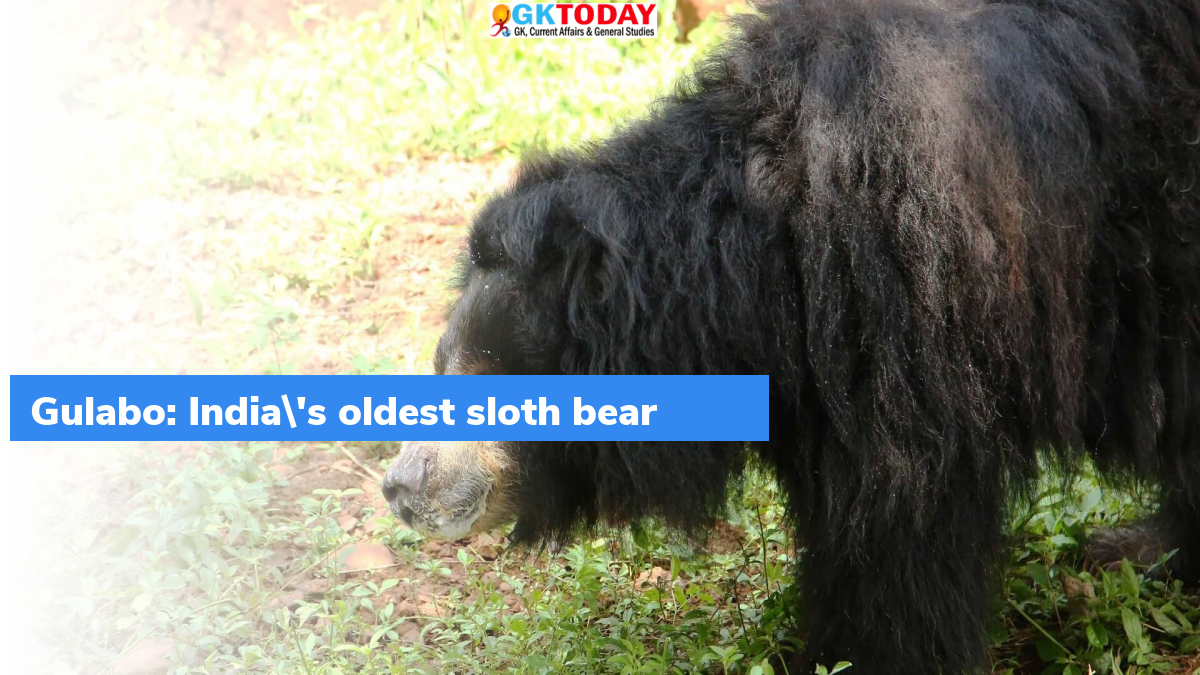Gulabo: India’s oldest sloth bear
On January 10, 2022, India’s oldest sloth bear, named Gulabo, died at the Van Vihar National Park and Zoo in Bhopal. The bear was aged 40.
Highlights
- The female sloth bear was one of the star attractions of this park.
- She was rescued from a Madaari or street performer, when she was 25-year-old, in May 2006.
- Autopsy report mention the cause of death as failure of internal organs because of old age.
- She was cremated by park staffers, as per the norms.
Which institute take care of sloth bears?
At Van Vihar, Wild Life (SOS) Institute takes care of the health and upkeep of sloth bears.
The sloth bears
The sloth bears are scientifically known as Melursus ursinus. They are a myrmecophagous bear species, which are native to the Indian subcontinent. They feed on fruits, ants and termites. They have been listed in Vulnerable category on the IUCN Red List, because of degradation and habitat loss.
Why are they called labiated bear?
The bear is also called as “labiated bear” because of their long lower lip and palate, which they use for sucking up insects.
What are other features of the bear?
They have a long, shaggy fur and a mane around the face. They also have long and sickle-shaped claws. The bears are lankier than brown and Asian black bears. They share the features of insectivorous mammals.
Breeding Season
Sloth bears breed during spring and early summer while give birth near the start of the winter.
Habitat of the bears
The global range of sloth bear includes India, temperate climatic zones of Bhutan & Sri Lanka and Terai region of Nepal. They occur in a wide range of habitats ranging from moist and dry tropical forests, scrublands, savannahs, and grasslands below 1,500 m on the Indian subcontinent. They are also found below 300 m in dry forests of Sri Lanka. However, they are regionally extinct in Bangladesh.
Month: Current Affairs - January, 2022
Category: Environment Current Affairs


